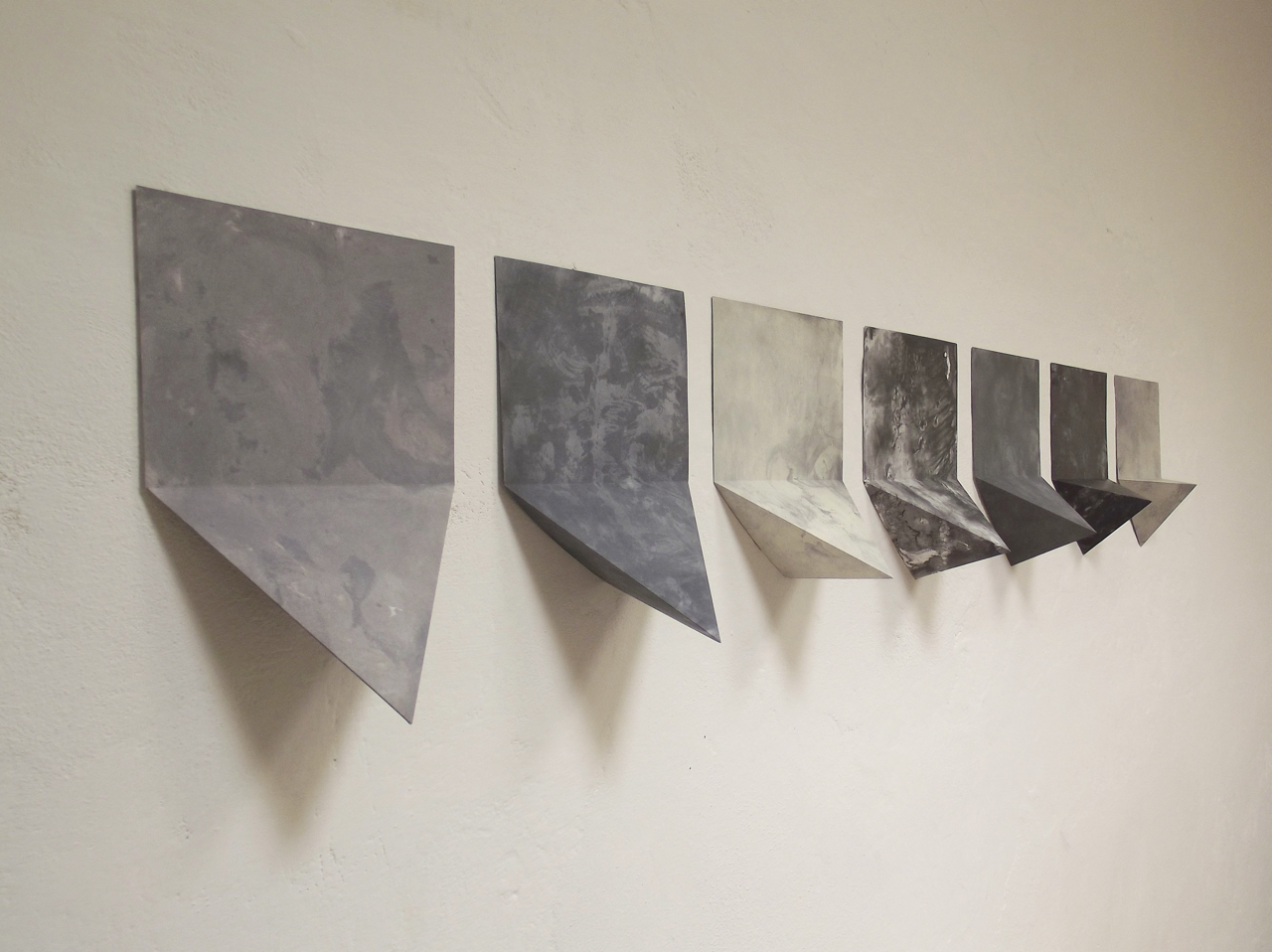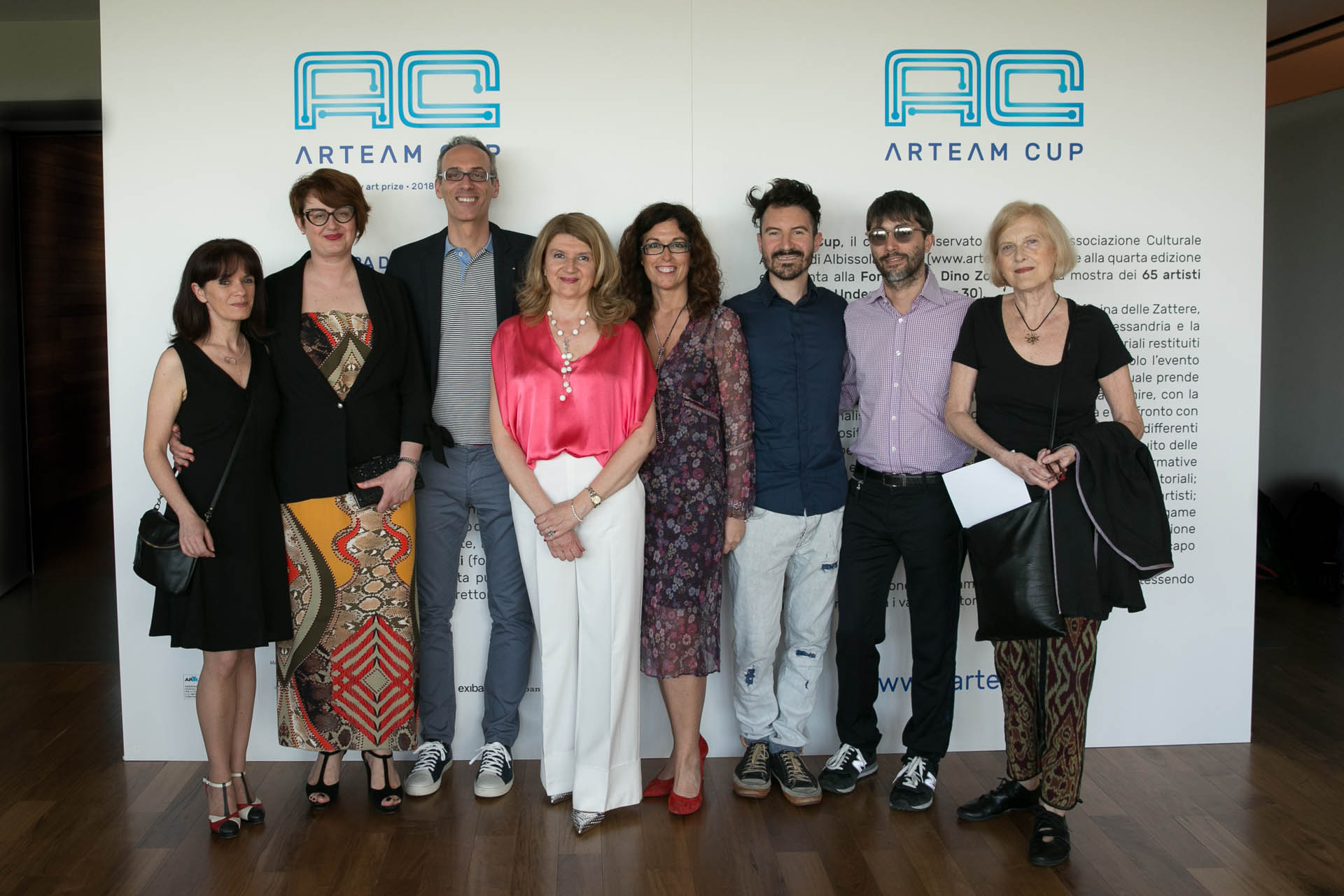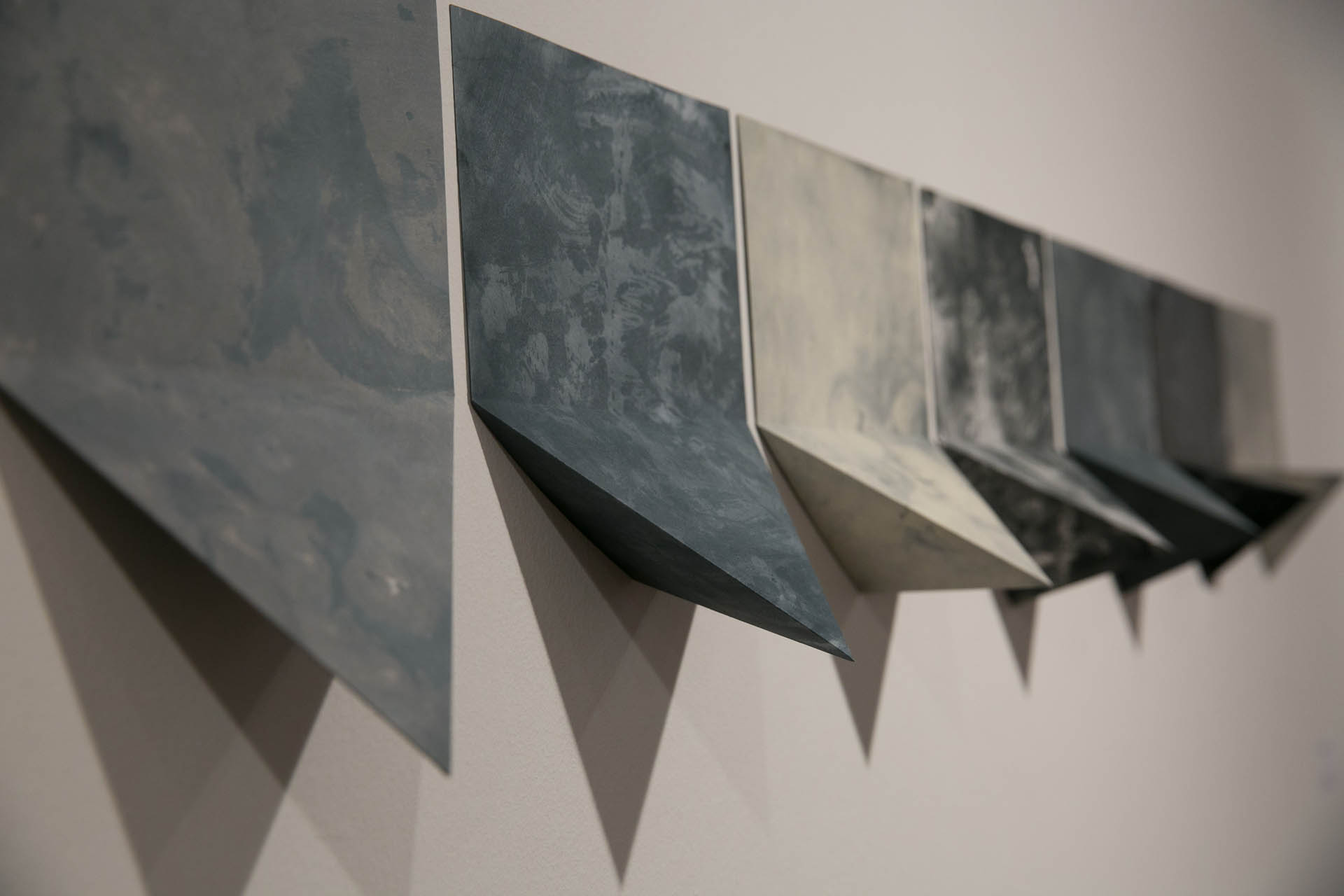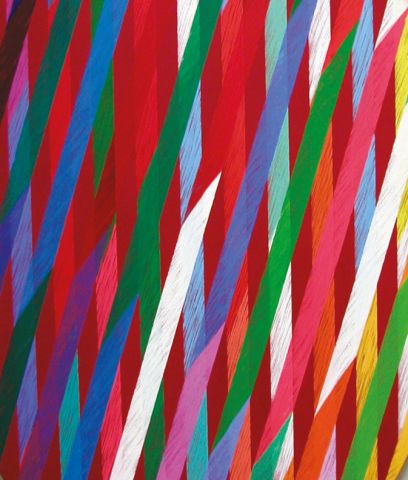Oil and acrylic painting on paper, 30 x 150 cm (each element about 21x 30 cm), 2017
GENESIS OF THE ARTWORK
Thomas Scalco has created a series of new three-dimensional works entitled Trophies.
The concept of a trophy is, in itself, the object of a semantic shift and inversion. In fact, its etymology is an accumulation of meanings that refer to the appropriation of something foreign that changes its nature from an oppositional to a celebratory meaning.
THE ARTIST
It is so also in the definitions that refer to it: “For the ancient Greeks and Romans, it was the symbol of a victory erected by the victors with the spoils of the vanquished, hanging from a tree or a pole, or piled, mostly on the very site of the battle“; “in ethnology, the remains of animals and enemies killed, worn or stored as a sign of valour and, also, to seize the spirit of the victims.”
The weapons of the enemy or the skin itself of the person with whom you are in conflict become positive elements, often set in a context that has changed status from a place of confrontation or opposition (the contended ground) to a space that has become part of your domain.
This distortion of the object can be particularly indicative if we focus on the interest of Scalco for the dynamic between finite and infinite, and for the ambition, exerted by art throughout time, to bring an awareness of totality and fullness to the everyday temporal dimension.
Here the overturning of the trophy becomes an instrument to short-circuit reality by bringing a discontinuity to the natural order of things capable of conveying the otherness of values and universes.
Scalco’s trophies bring together these suggestions to make the object a tipping point, a totem erected in the finite world where the absolute can manifest itself, even in the dark and looming fear that looks like a prey and a sacrifice.
In this way the concreteness of their shape also aims to disappear, while the violence of their indication towards the world aims to be transcended in a contemplation that has its beginning and its end here and now, as an open window onto another world but still present next to us.




